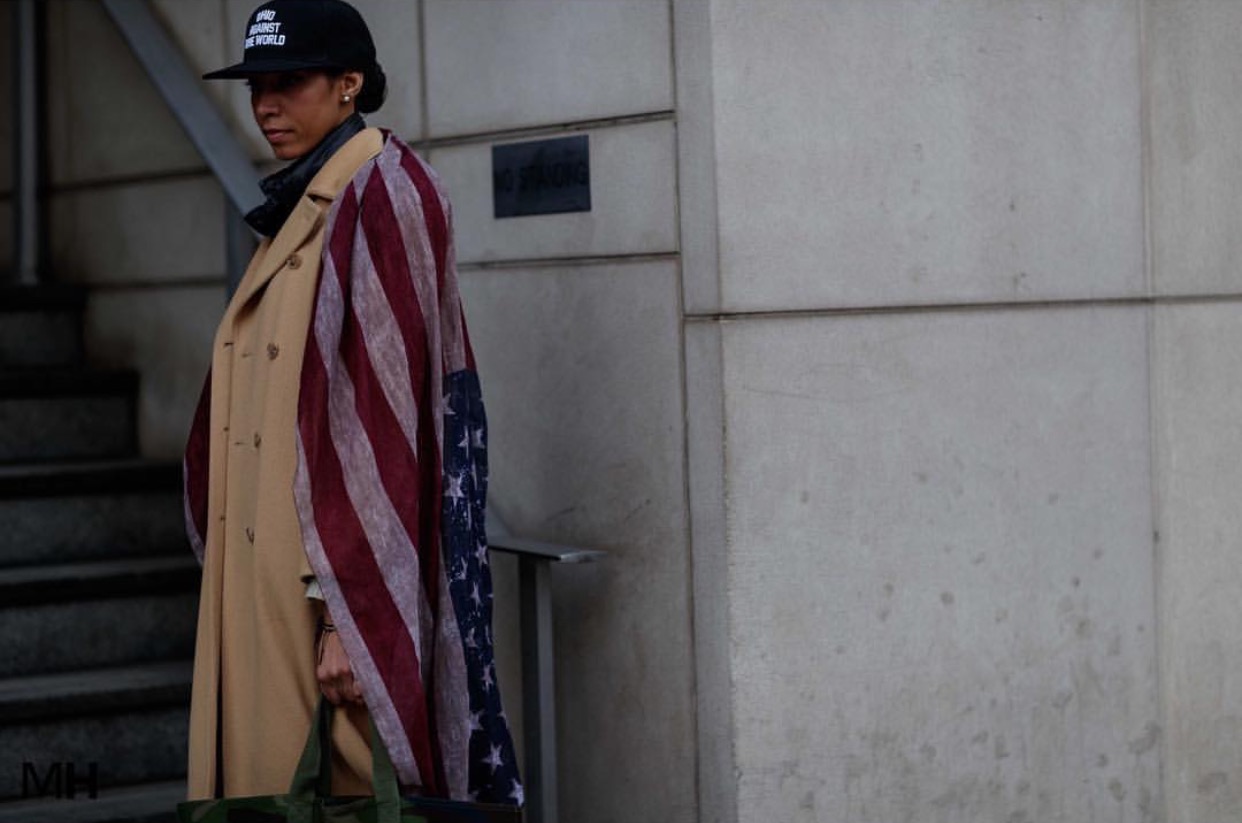As a stylist and activist, Hannah Stoudemire bridges fashion and civic responsibility like few others in the industry. Stoudemire gathered experience across the industry, from retail to show production, but truly caught everyone’s attention last July when she brought the Black Lives Matter movement to the forefront of New York Fashion Week: Men’s.
In honor of Black History Month, we caught up with Stoudemire about diversity in fashion, the industry’s responsibility to herald change, and why education about social issues is so important.
You made a powerful statement for Black Lives Matter during NYFW: Men’s last July. What inspired you to bring the movement to NYFW?
At the time, I was working at the Lanvin men’s flagship. I was the only African-American woman on the floor. Philando Castile, unarmed in his car with his girlfriend in the driving seat, was shot and killed, and a day earlier, Alton Sterling was shot, and they found a black man hanging in Piedmont Park. I was on the floor every day, and no one said anything to me. They watched the video on their phones, then moved on to other news. It seems the entire fashion industry came to a pause when 50 people were killed in the Orlando nightclub. I felt that when that group was targeted, every stopped and grieved and had vigils, but when an African-American was targeted, it was almost as if it were expected, like it’s not important enough to pause on a national stage. I wasn’t going to sit back in this industry and go on with business as usual while my community was being targeted. That’s when I decided to do spring into action.
Where do you see the intersection of fashion and civic responsibility?
The intersection of fashion and civic responsibility should lie at the center of this industry. It’s at the very core. To whom much is given, much is required, and Jesus said that.
If you are neutral in situations of injustice, you have chosen the side of the oppressive, Desmond Tutu said. So the fashion industry, with all its power and influence, cannot afford to be neutral. We are good people, and we want to be great.
The primary function of the fashion industry is to provide clothing to people. So naturally, it is expected that one would feel responsible for the very beings that you clothe.
How do you view the level of diversity in fashion at this moment?
It’s extremely limited in its diversity. I see the industry making strides, but it feels very token [as if they say] “We will use three Asian models, we will have four black models.” The level of diversity is limited but it doesn’t have to be. Diversity more than race or gender. It’s celebrating all differences. It encompasses all people, including people with disabilities. Fashion can do more. Our job is to figure out how. That’s what we are tasked to do now—more than just the token, more than just meeting the minimum, for the sake of including all people.
What in your view can the fashion industry do to encourage more diversity overall, including among models, designers and executives?
The first thing is to create awareness and education. A lot of the lack of diversity comes from ignorance. You have top learn to embrace all. If you don’t know, you can’t do what you don’t know. Education is key. Create awareness and programming to promote diversity, implement it, practice it, and live it.
As a stylist and activist, what is the most effective way to inspire change?
Model the way, live your conviction, and stand your ground. You will create change, because you make noise. It’s authentic, it will be felt and received well, and it will inspire others to follow the same path.



